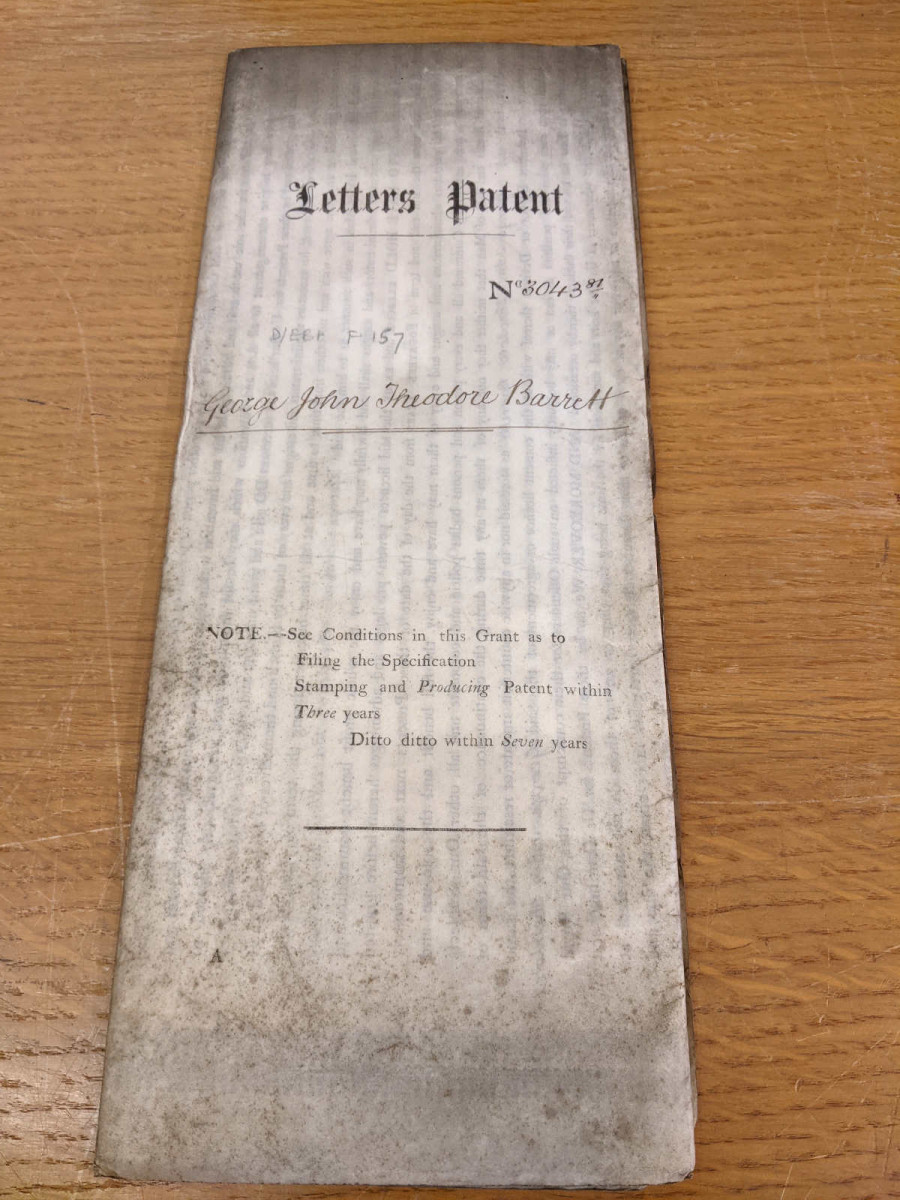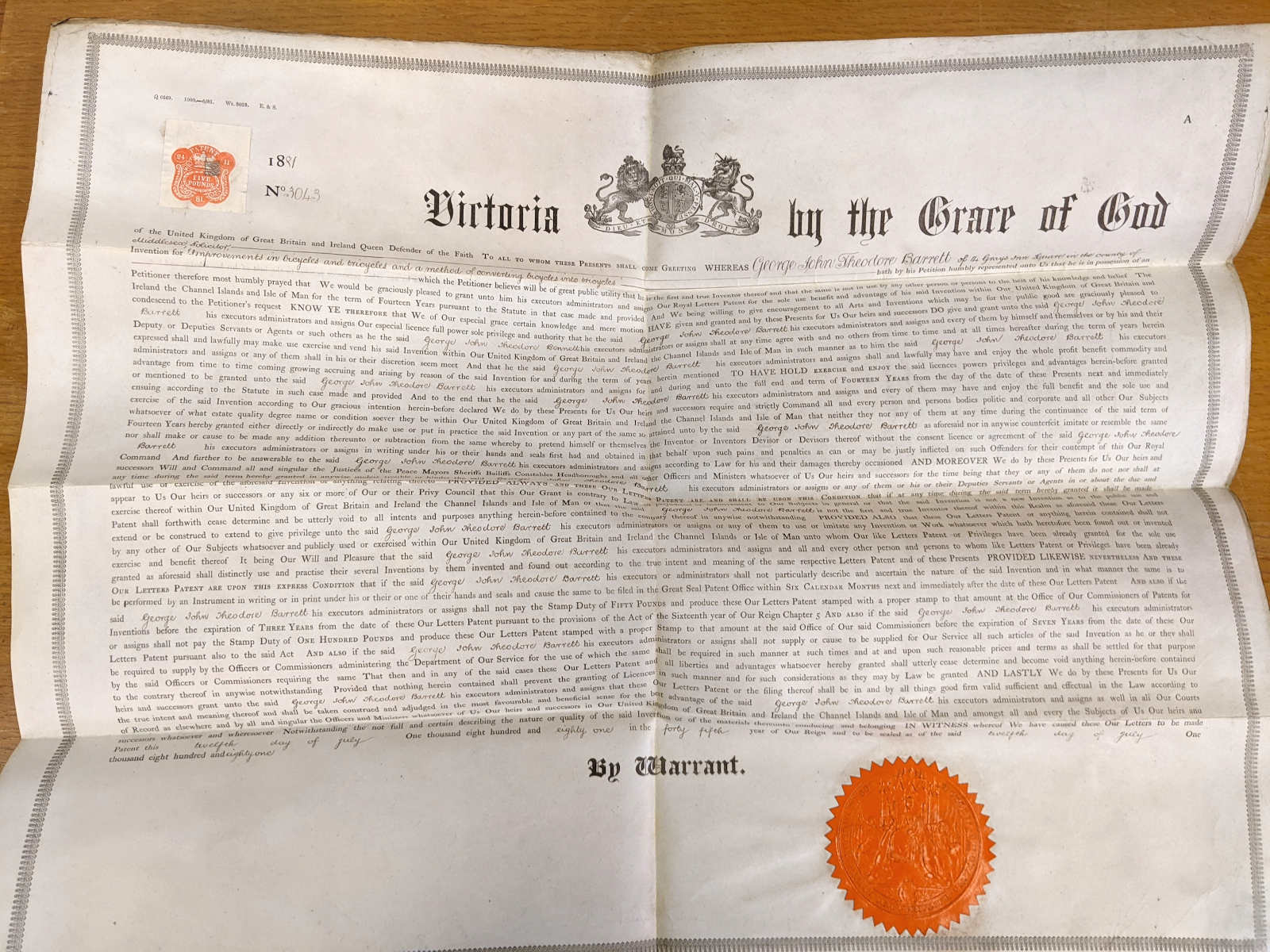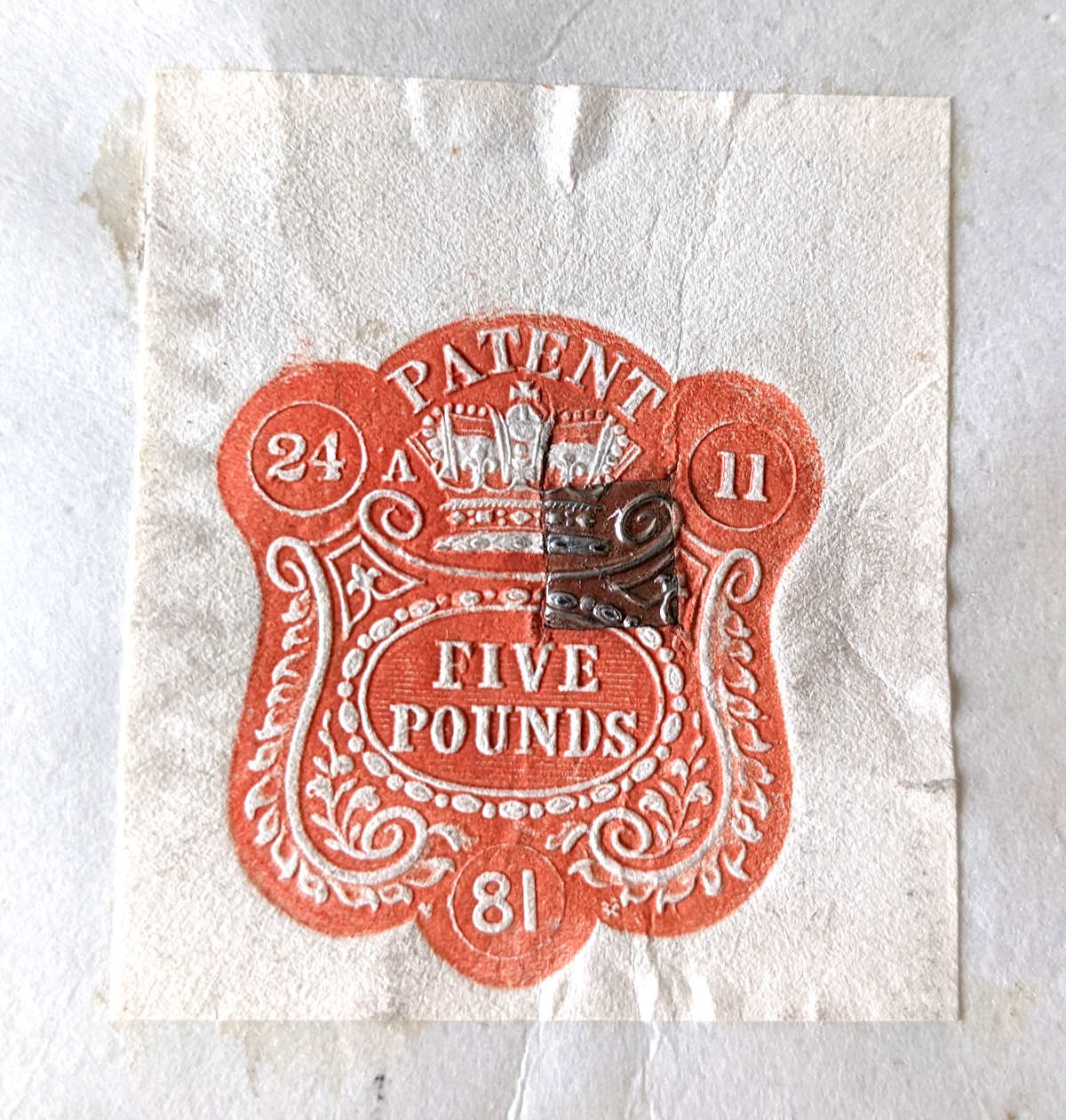Amongst the Barrett and Belson family papers is a curious patent for improvements to bicycles given to George John Theodore Barrett, a solicitor from 14 Grays Inn Square, Middlesex, on 12 July 1881 (ref. D/EBT/F157). To look at what improvements these might be, we took a look into the history of the humble bicycle.

It has been suggested that the invention of the bicycle was more of an ‘evolution’ as the look that we are familiar with today, was developed by several ‘inventors’ in the nineteenth century. Karl von Drais created a two-wheeled, steerable ‘hobby horse’ in 1817 which riders pushed themselves along on using their feet on the floor.
Pedals were not added until the 1860s following developments by various French and German inventors – these were often referred to as ‘bone shakers’ because they were apparently very uncomfortable to ride.
The now famous penny farthing with its oversized front wheel by Eugene Meyer and James Starley, was popular in the 1870s to 1880s, but it was Englishman John Kemp Starley’s design for the ‘safety bicycle’ which had equal sized wheels and chain, that revolutionised bicycles. They were lighter, more stable and therefore more popular. Interestingly, brakes and tyres only came later – so much for safety then!

This patent states that the inventor believed it would be of “great public utility that he is the first and true Inventor thereof and that the same is not in use by any other person or persons to the best of his knowledge and belief.” It covered the United Kingdom of Great Britain and Ireland the Channel Islands and Isle of Man for 14 years, but could not be granted without paying the ‘stamp of Five pounds’ - about £468 in today’s money. As we can see from the image below, the sum of £5 was duly paid and added to the patent itself.

The patent merely states that it was for “improvements in bicycles and tricycles and a method of converting bicycles into tricycles” - unfortunately, it is not clear exactly what the improvements were. It must have added ‘something’ extra, though sadly we don’t have any drawings to go with it. It would certainly have been interesting to see how you could convert a bicycle to a tricycle.
If you’re interested in looking into historical patents, the National Archives holds records relating to those between 1617 to 1852 and the British Library also holds those as well as records from 1852 to 1899. Perhaps if you plan on visiting the British Library at all, you could look this patent up and let us know if there is any more detail on what the improvements were!
Sources and further reading on the history of the bicycle:
